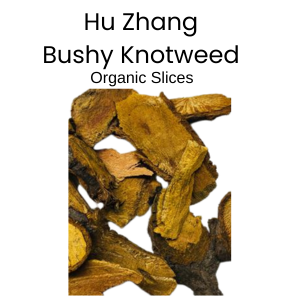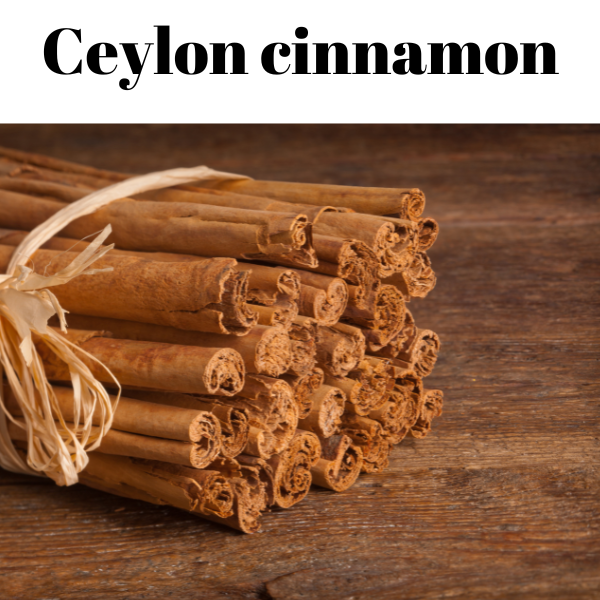

Hu Zhang (Bushy Knotweed, Polygonum cuspidatum) is appreciated in Traditional Chinese Medicine (TCM) and modern wellness routines for its resveratrol-rich profile that supports a healthy inflammatory response, antioxidant protection, balanced immune function, and normal circulation. This guide shows you exactly how to brew a consistent cup with a traditional decoction, plus a 2-minute powder method, alternative appliances, flavor ideas, storage, quality tips, and quick troubleshooting.
 What You’ll Need
What You’ll NeedIngredients
Hu Zhang cut root (preferred for decoction) or powder
Fresh water
Tools
Non-reactive pot (stainless steel or ceramic; avoid aluminum)
Lid (to keep your decoction covered)
Fine strainer or reusable tea bag
Kitchen scale (recommended) or measuring spoon
Heat-safe mug or bottle
Check out our step-by-step guides on How to use Bulk Herbs
Rinse briefly: Give the cut root a quick rinse to remove dust from handling.
Optional pre-soak (10 minutes): Helps soften very coarse cuts for more even extraction.
Cut size matters: Smaller pieces expose more surface area. If your pieces are large and woody, lightly crush with a mortar/pestle or back of a spoon.
Cover while simmering: Minimizes evaporation and preserves volatiles.
Water temperature: Aim for a gentle simmer, ~185–205°F (85–96°C)—not a rolling boil.
 Exact Ratios & Timing — Traditional Decoction (Cut Root)
Exact Ratios & Timing — Traditional Decoction (Cut Root)Single cup (12–16 oz / 355–475 ml)
1 Tbsp (≈ 6–8 g) cut root per 12–16 oz water
Bring to a gentle simmer (185–205°F), cover, and simmer 20–30 minutes
Strain into a mug; enjoy warm or iced
Batch prep (≈ 4 cups / 1 liter)
20–30 g cut root + 1 liter water
Same 20–30 minute covered simmer; strain into a bottle and refrigerate
Target yield & sensory markers
Start with 16 oz water; expect 12–14 oz after simmer (top up with hot water if desired)
Color should be amber to brown, with an earthy, lightly bitter aroma and taste
Why a decoction? Hu Zhang is a dense rhizome. A covered simmer softens the lignified plant matrix and pulls more water-soluble constituents—including polydatin/resveratrol and emodin—for a fuller, more consistent cup.
After your first simmer, reserve the spent root. Add fresh water at the same ratio and simmer 15–20 minutes, covered. Combine both batches for a rounder flavor and efficient use of herbs.
Heat 8–12 oz (240–355 ml) water to just off boil
Whisk in ½–1 tsp Hu Zhang powder
Let stand 5 minutes, then whisk again; sip and enjoy
Optional flavor support: lemon, a thin ginger slice, or a dash of cinnamon (for taste only)
When to choose powder: Fastest prep, travel-friendly, and no straining. Texture and taste can vary by grind.
Slow cooker: Add cut root and water at the standard ratio; cook on LOW for 2–3 hours, covered. Strain.
Electric pressure cooker: Standard ratio; High Pressure 10–12 minutes, Natural Release 10 minutes. Strain.
Iced concentrate: Simmer to half volume, cool, and freeze in cubes. For a quick glass, dissolve one cube in hot water and dilute to taste.
Tip: Use a stainless or ceramic pot, keep a gentle simmer (185–205°F / 85–96°C), and cover during decoction. This tool is for educational use.

Bright & cozy: Orange peel + cinnamon stick
Warming: Fresh ginger coin + light drizzle of honey
Citrus-mint: Lemon slice + 2–3 mint leaves
Spice note: Single star anise (remove before serving)
These additions are for flavor only and do not change the intended use as part of a wellness routine.
Refrigerate brewed tea in a sealed jar within 2 hours of making
Enjoy within 24–48 hours for best quality
Natural sediment is normal—shake before serving
Reheat gently (do not re-boil), or enjoy chilled over ice
| Form | Prep Time | Flavor | Pros | Considerations |
|---|---|---|---|---|
| Cut Root (Decoction) | 20–30 min | Robust, earthy | Traditional; fuller extraction | Time + straining |
| Powder (Instant) | 1–2 min | Varies by brand | Fast; portable; no straining | Texture/taste vary |
| Teapills | Seconds | Neutral | Easiest to include | Not a “tea” experience |
Too bitter? Shorten simmer to 20 minutes or dilute 20–30% with hot water.
Too weak? Extend to 30 minutes or add 2–3 g more root.
Powder feels gritty? Whisk → rest 5 minutes → whisk again; optionally pass through a fine-mesh strainer.
(I personally use a coffee filter to strain the powder through. For me, it seems the easiest)
Cloudy brew? Normal with powders; shake before serving.
Evaporation too high? Keep the lid on and lower heat to maintain a gentle simmer.
Quality markers: Look for lot-specific lab testing and GMP-compliant processing.
Sourcing note: Japanese knotweed is invasive in some regions; responsible sourcing supports ecological stewardship.
Plant family: Hu Zhang belongs to the Polygonaceae family (rare sensitivities are possible).
General considerations: Not recommended during pregnancy or breastfeeding. Consult a practitioner if using anticoagulants, blood sugar, or blood pressure medications. Some individuals report mild digestive upset at higher amounts.
Why simmer instead of steep?
Hu Zhang’s dense root responds better to time + heat. A decoction softens the plant matrix and improves extraction, giving a fuller cup than a quick infusion.
What ratio should I start with?
A reliable baseline is 1 Tbsp (≈ 6–8 g) cut root per 12–16 oz water, gently simmered 20–30 minutes, covered.
Can I re-use the root?
Yes. Perform a second decoction for 15–20 minutes and combine with the first batch.
Does lemon affect extraction?
Add lemon after simmering. Acidic ingredients during simmering may change extraction dynamics and flavor.
Can I mix cut root and powder?
Yes. Some people brew a light decoction and whisk in ¼–½ tsp powder for extra body.
Is Hu Zhang tea caffeine-free?
Yes, Hu Zhang is naturally caffeine-free.
How long will the tea keep?
Refrigerate promptly and enjoy within 24–48 hours. Shake before pouring.
Hu Zhang (Bushy Knotweed) — Cut Root
Traditional decoction ready.
Hu Zhang (Bushy Knotweed) — Powdered Root
Fast, whisk-and-sip convenience.